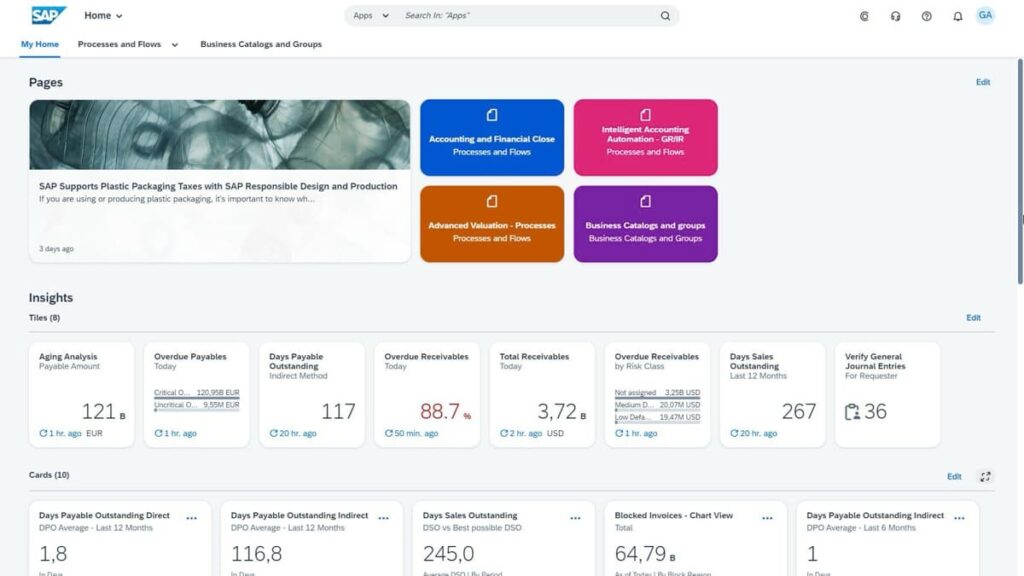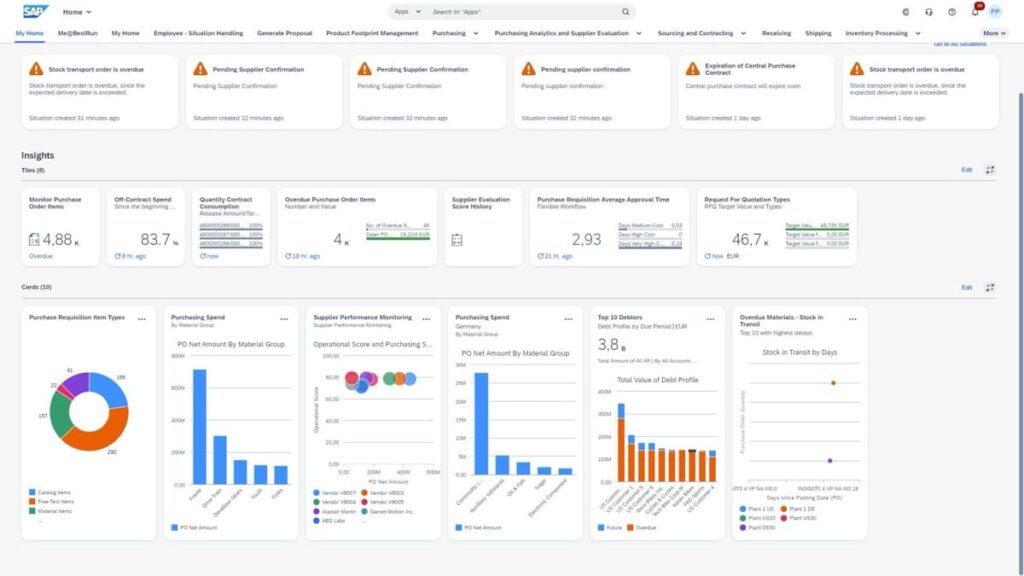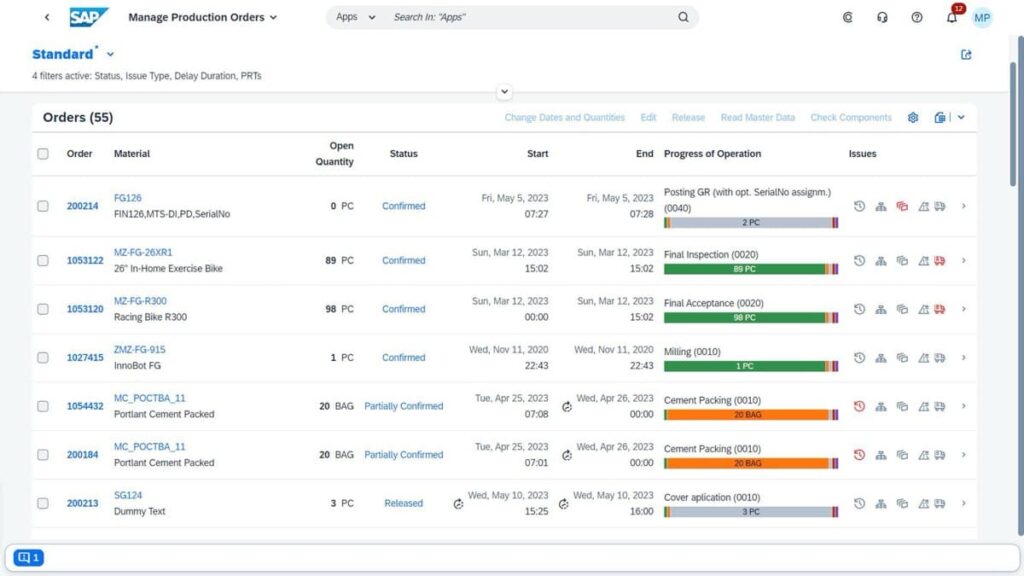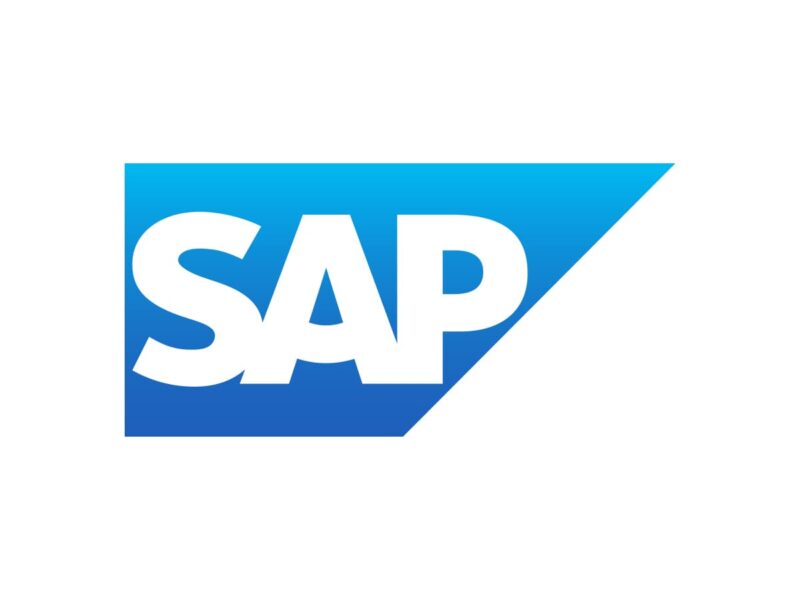Table of Contents
Dive into our comprehensive review of the SAP S/4HANA Cloud ERP System, the next-generation business suite designed to provide superior performance, agility, and efficiency. In this article, we explore its key features, analyze system performance, and weigh the pros and cons, offering expert insights and answering frequently asked questions. Whether you’re considering a transition to SAP S/4HANA or seeking to optimize your current setup, our detailed analysis provides the essential information to guide your decision-making process.
Key Features of SAP S/4HANA Cloud ERP System

Real-Time Analytics and Reporting
SAP S/4HANA Cloud offers real-time analytics and reporting capabilities, enabling businesses to make informed decisions swiftly. This feature allows for the immediate analysis of live data without the need for batch processing, significantly reducing decision-making time and enhancing operational efficiency.
Simplified Data Model
At the heart of SAP S/4HANA Cloud is a simplified data model that reduces data redundancy, footprint, and complexity. This streamlined approach not only accelerates data processing but also simplifies IT management and reduces storage costs, making it an economically attractive solution for businesses.
User Experience with SAP Fiori
SAP Fiori, the user interface for SAP S/4HANA Cloud, delivers a role-based, intuitive, and seamless user experience across all devices. This design philosophy ensures that users can easily navigate the system and access essential functions, improving productivity and user satisfaction.
Cloud and On-Premise Deployment Flexibility
SAP S/4HANA Cloud offers unparalleled flexibility in deployment options, catering to businesses’ varying needs. Organizations can choose between a fully cloud-based model for agility and scalability or an on-premise deployment for greater control and customization. This flexibility ensures that businesses can select the deployment strategy that best fits their requirements.
Advanced Compliance and Security Features
Recognizing the critical importance of data security and regulatory compliance, SAP S/4HANA Cloud incorporates advanced security features and compliance tools. These measures provide robust protection against threats and ensure adherence to legal and regulatory standards, giving businesses peace of mind regarding their data integrity.
Integration Capabilities
With its extensive integration capabilities, SAP S/4HANA Cloud seamlessly connects with other SAP and third-party applications, facilitating smooth data exchange and process orchestration. This interoperability is crucial for businesses looking to maintain a unified IT landscape and avoid siloed data.
Intelligent Technologies
Embedded with AI, machine learning, and predictive analytics, SAP S/4HANA Cloud harnesses intelligent technologies to automate routine tasks, offer insights, and anticipate future business outcomes. This empowers organizations to innovate and stay ahead of market trends.
Incorporating these key features, SAP S/4HANA Cloud ERP System stands as a beacon of innovation in the ERP market, providing businesses with the tools to transform their operations, enhance decision-making, and secure a competitive edge in the digital era.
Performance

Accelerated Processing Speed
SAP S/4HANA Cloud utilizes the HANA in-memory database technology, which allows for the processing of large volumes of data in real-time. Unlike traditional disk-based databases, data in HANA is stored in RAM, reducing data retrieval times and accelerating analytical and transactional processing. This results in faster end-to-end processes, enabling businesses to react more quickly to market changes and decision-making needs.
Enhanced Data Throughput
The system is engineered for high data throughput, handling complex queries and transactions simultaneously without sacrificing performance. This capability ensures that businesses can scale their operations and manage increased data volumes efficiently, supporting growth without the need for significant additional IT infrastructure.
Real-time Insights and Analysis
One of the standout features of SAP S/4HANA Cloud is its ability to provide real-time insights and analysis. The system integrates transactional and analytical data processing, allowing users to access up-to-the-minute information and perform analytics on live data. This instant access to data facilitates more accurate forecasting, reporting, and decision-making, enhancing overall business performance.
Reduced Data Footprint
SAP S/4HANA Cloud’s simplified data model significantly reduces the data footprint by eliminating data redundancies and aggregates. This not only improves performance by decreasing the amount of data that needs to be processed, stored, and retrieved but also reduces infrastructure and storage costs.
Scalability
The cloud-native architecture of SAP S/4HANA ensures that businesses can scale their ERP solutions up or down based on current needs without compromising performance. This scalability is crucial for adapting to seasonal demands, growth, and global expansion, providing businesses with flexibility and control over their IT resources.
Reliability and Uptime
SAP S/4HANA Cloud is designed with high availability and disaster recovery in mind, ensuring minimal downtime and maintaining business continuity. The system’s robust architecture and cloud infrastructure offer a reliable platform that businesses can depend on for their critical operations.
Optimized for Various Business Scenarios
SAP S/4HANA Cloud is optimized for a wide range of business scenarios and industries, offering tailored functionalities that address specific requirements. This optimization ensures peak performance across different sectors, including finance, manufacturing, supply chain, and more, allowing businesses to leverage best practices and industry standards.
In summary, the performance of the SAP S/4HANA Cloud ERP System is characterized by its speed, efficiency, and adaptability. By harnessing the power of in-memory computing and a simplified data model, it provides businesses with a powerful tool to streamline operations, gain real-time insights, and maintain a competitive edge in today’s fast-paced digital environment.
Pros
- Enhanced Efficiency and Speed: Utilizing the in-memory computing power of SAP HANA, S/4HANA Cloud significantly boosts processing speed and efficiency. This acceleration enables real-time data analysis and faster transaction processing, streamlining business operations.
- Improved Decision-Making: The real-time analytics capabilities of S/4HANA Cloud provide businesses with immediate insights into their operations, enhancing decision-making with up-to-date information and predictive analytics.
- Scalability: SAP S/4HANA Cloud offers scalable solutions that grow with your business. The cloud infrastructure allows for easy scaling of resources to accommodate business expansion or fluctuating demands, ensuring that companies always have the appropriate level of support.
- Advanced Integration: S/4HANA Cloud seamlessly integrates with other SAP solutions and third-party systems, facilitating unified operations. This integration capability ensures that businesses can maintain a cohesive IT ecosystem.
- Innovation and Future-Readiness: With continuous updates and a focus on incorporating the latest technologies like AI and machine learning, S/4HANA Cloud keeps businesses at the forefront of innovation, ensuring they are well-equipped for future challenges.
- Reduced IT Overhead: By leveraging cloud technology, businesses can reduce their IT infrastructure costs and complexity. SAP’s managed services include regular updates, security, and compliance, reducing the burden on in-house IT teams.
Cons
- Implementation Complexity: Migrating to SAP S/4HANA Cloud can be complex and time-consuming, especially for organizations with extensive customization in their current systems. This transition requires careful planning and expertise to minimize disruptions.
- Cost Considerations: While the total cost of ownership may be lower in the long run, the initial investment and ongoing subscription fees for SAP S/4HANA Cloud can be significant, making it a considerable investment for some businesses.
- Learning Curve: The comprehensive functionality of SAP S/4HANA Cloud comes with a steep learning curve. Employees may require extensive training to fully leverage the system’s capabilities, which can be time-consuming and costly.
- Customization Limitations: While SAP S/4HANA Cloud offers configuration options, there may be limitations on deep customization compared to on-premise solutions. Businesses with highly specific needs might find these limitations challenging.
- Dependency on Internet Connectivity: As a cloud-based solution, S/4HANA Cloud relies on consistent and high-speed internet connectivity. Any connectivity issues can disrupt access to the ERP system, affecting business operations.
- Data Sovereignty and Compliance: For businesses with strict data sovereignty and compliance requirements, moving sensitive data to the cloud can raise concerns. While SAP provides robust security and compliance measures, some organizations may require additional assurances or prefer to keep certain data on-premise.
Final Thoughts

The expertise and unique perspective on the SAP S/4HANA Cloud ERP System underscore its distinction in the ERP landscape, emphasizing a blend of technological innovation, industry-specific solutions, and a forward-looking approach to business management. This unique perspective is rooted in several core elements that SAP brings to the table, shaping how enterprises view and implement ERP systems today.
Emphasis on In-Memory Computing
SAP S/4HANA Cloud leverages SAP’s pioneering in-memory computing technology, HANA, which fundamentally changes data processing’s speed and efficiency. This focus allows for real-time analytics and insights, a cornerstone of the system’s value proposition. The ability to process and analyze data instantly provides businesses with a clearer, more immediate understanding of their operations, enabling swift decision-making and agility in response to market changes.
Future-Ready Architecture
The system is designed with a future-ready architecture that not only addresses current business needs but also anticipates future technological advancements and trends. This includes built-in flexibility to incorporate emerging technologies such as artificial intelligence (AI), machine learning, and Internet of Things (IoT) connectivity, ensuring that businesses remain at the forefront of innovation. SAP’s commitment to continuously updating S/4HANA Cloud means companies can adapt to new challenges and opportunities as they arise.
Industry-Specific Capabilities
SAP S/4HANA Cloud is not a one-size-fits-all solution; it offers tailored configurations to meet the unique demands of various industries, from manufacturing and retail to healthcare and finance. This deep industry expertise, built on decades of experience and collaboration with industry leaders, enables SAP to deliver solutions that closely align with specific business processes, regulatory requirements, and industry best practices.
Simplified Data Model and User Experience
A significant shift introduced with SAP S/4HANA Cloud is the simplified data model, reducing complexity and enhancing performance. This, coupled with the SAP Fiori user interface, offers an intuitive, user-friendly experience that prioritizes accessibility and ease of use. The focus on simplifying user interactions and streamlining processes reflects SAP’s understanding of the importance of user engagement and productivity.
Commitment to Sustainability
SAP integrates sustainability considerations into its solutions, recognizing the increasing importance of environmental responsibility in business operations. SAP S/4HANA Cloud supports sustainable practices through features that help manage energy use, reduce carbon footprints, and ensure ethical supply chains, aligning with corporate sustainability goals.
Global Network and Support
Leveraging a vast global network of partners, consultants, and support professionals, SAP ensures that businesses implementing S/4HANA Cloud have access to extensive support and expertise. This ecosystem facilitates knowledge sharing, best practices, and innovation, enriching the user experience and ensuring successful deployments.
Focus on Security and Compliance
In today’s digital landscape, data security and regulatory compliance are paramount. SAP S/4HANA Cloud is built with robust security features and compliance tools, addressing the complex challenges of data protection, privacy laws, and industry regulations. This commitment to security and compliance is a key consideration for businesses operating in sensitive or highly regulated environments.
The expertise and unique perspective SAP brings to its S/4HANA Cloud ERP System reflect a deep understanding of modern business challenges and an unwavering commitment to innovation, efficiency, and customer success. By focusing on these core elements, SAP not only delivers a powerful ERP solution but also shapes the future direction of enterprise resource planning.
FAQs
-
What Makes SAP S/4HANA Cloud Different from Other ERP Systems?
SAP S/4HANA Cloud stands out due to its in-memory computing foundation, leveraging the SAP HANA database’s power to offer unparalleled processing speed and real-time analytics. This technological backbone enables it to process large volumes of data instantaneously, supporting faster decision-making and operational efficiency. Unlike many traditional ERP systems that rely on batch processing, S/4HANA Cloud allows for the analysis and transaction of data in real time, providing businesses with immediate insights into their operations.
Furthermore, its emphasis on a simplified data model significantly reduces system complexity and data redundancy, leading to improved performance and lower data management costs. The system is inherently designed with a mobile-first approach, ensuring accessibility and a consistent user experience across various devices through the SAP Fiori user interface. Additionally, SAP S/4HANA Cloud is distinguished by its robust suite of AI and machine learning capabilities, embedded analytics, and comprehensive industry-specific functionalities, ensuring that businesses can tailor the solution to meet their unique needs and challenges. -
Can SAP S/4HANA Cloud Integrate with Existing Systems and Data?
Yes, SAP S/4HANA Cloud is built to integrate seamlessly with existing systems and data, whether they are SAP products or third-party applications. This is a critical capability, as businesses often operate within complex IT landscapes comprising various systems and applications that need to work together harmonically.
SAP provides extensive APIs and middleware solutions, such as SAP Cloud Platform Integration, to facilitate this integration. These tools allow for the smooth exchange of data and processes between S/4HANA Cloud and other systems, ensuring consistency and minimizing the risk of data silos. Integration capabilities are essential for achieving a unified view of operations and enabling comprehensive, cross-functional business processes. Additionally, SAP’s large ecosystem of partners offers various pre-built integration packages and custom integration services, helping businesses to connect and extend their S/4HANA Cloud solution effectively. -
What Are the Key Considerations for Migrating to SAP S/4HANA Cloud?
Migrating to SAP S/4HANA Cloud is a significant undertaking that requires careful planning and consideration. Key considerations include:
Business Objectives and Strategy: Understand how S/4HANA Cloud aligns with your business goals and digital transformation strategy. It’s essential to define clear objectives for the migration, such as improving operational efficiency, enhancing decision-making, or fostering innovation.
Data Migration and System Clean-up: Assess the current state of your data and systems. Migrating provides an opportunity to clean up legacy data and streamline processes. Consider what data needs to be migrated and any necessary conversions or transformations.
Customization and Integration Needs: Evaluate your current system customizations and integration requirements. While S/4HANA Cloud offers configuration options, excessive customization can complicate the migration and future upgrades. Plan for how existing integrations will be handled in the new environment.
Change Management and Training: A migration impacts not just technology but also people and processes. A comprehensive change management plan, including training and support for users to adapt to the new system, is crucial for a successful transition.
Choosing the Right Implementation Partner: Given the complexity of the migration, working with an experienced implementation partner who understands your industry and specific business needs can be invaluable. They can provide guidance, best practices, and support throughout the migration process.
Cost and ROI Analysis: Consider the total cost of migration, including software, services, training, and any potential downtime. Weigh these costs against the expected benefits and return on investment (ROI) to ensure that the migration aligns with your financial planning and objectives.
Approaching the migration with a clear strategy, understanding the unique capabilities and requirements of SAP S/4HANA Cloud, and addressing these key considerations will help ensure a smooth transition and enable businesses to fully leverage the benefits of the system.




